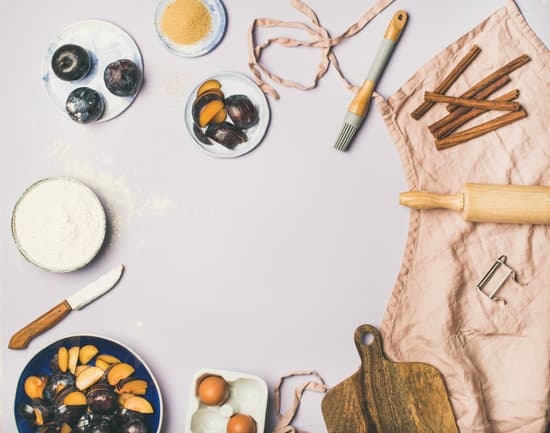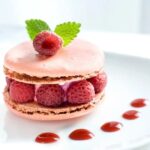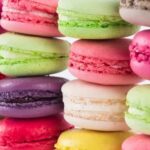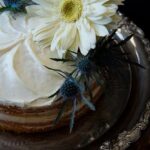Cake decoration is an essential element in the world of baking, elevating a simple baked creation into a stunning masterpiece. Whether for a special occasion or just to satisfy a sweet craving, knowing what to decorate cakes with can truly make a difference in the overall presentation and enjoyment of the dessert. The right decorations not only add visual appeal but can also enhance the flavors and textures of the cake.
When it comes to decorating cakes, there are various options to consider. From different types of frosting like buttercream, fondant, and royal icing to edible decorations such as fresh fruits, edible flowers, and chocolate shavings, the choices are endless. Each type of decoration has its own unique characteristics and can cater to different tastes and preferences. Understanding how to choose the right decoration for your cake can result in a harmonious combination that delights both the eyes and taste buds.
In addition to edible decorations, non-edible elements like cake toppers, ribbons, and themed figurines also play a crucial role in enhancing a cake’s visual appeal. These decorative items can add personality and charm to any cake design, making it perfect for any celebration or event. By exploring various decorating techniques and tools like piping bags, tips, spatulas, and turntables, one can unlock endless possibilities for creating beautiful cakes that are sure to impress any guest or recipient.
Types of Frosting
When it comes to cake decoration, selecting the right type of frosting plays a crucial role in achieving the desired look and taste of the cake. There are various types of frosting to choose from, each offering unique properties and textures that can enhance the overall appeal of your creation. The most common types of frosting include buttercream, fondant, and royal icing, each with its own benefits and challenges.
Buttercream
Buttercream is a classic frosting choice for cakes due to its creamy texture and versatility. Made from butter or vegetable shortening, powdered sugar, vanilla extract, and milk or cream, buttercream can be easily flavored and colored to suit different preferences. It is perfect for creating smooth finishes on cakes or piping intricate designs. Buttercream is a popular choice for those looking for a traditional and tasty frosting option.
Fondant
Fondant is a popular choice for creating elaborate cake decorations due to its smooth and pliable consistency. Made from sugar, water, gelatin, and glycerin, fondant provides a polished finish and allows for intricate designs like sculpted figures or detailed patterns. While some may find fondant less flavorful than buttercream, its ability to hold shape well makes it ideal for sculpting 3D decorations on cakes.
Royal Icing
Royal icing is a hard-drying icing made from powdered sugar and egg whites, giving it a glossy finish when dried. This type of frosting is commonly used for piping intricate details on cakes, creating delicate lace patterns or intricate borders.
Royal icing sets firm once dried, making it ideal for decorations that need to hold their shape like flowers or letters. However, it can be challenging to work with due to its quick-drying nature and requires practice to master piping techniques with this type of frosting.
Edible Decorations
When it comes to decorating cakes, the options are endless, especially when considering edible decorations. Fresh fruits like berries, sliced kiwis, or citrus zest can add a pop of color and freshness to your cake. These natural decorations not only look beautiful but also bring a burst of flavor that complements the sweetness of the cake.
Similarly, edible flowers such as pansies, roses, or lavender petals can transform a simple cake into a stunning masterpiece. Just make sure to choose flowers that are safe for consumption and free from pesticides.
In addition to fruits and flowers, chocolate shavings are another favorite choice for decorating cakes. Whether you prefer dark, milk, or white chocolate, shaving curls or gratings of chocolate over a cake adds a touch of elegance and indulgence.
For those with a sweet tooth, candy sprinkles in various shapes and colors can bring a fun and festive element to your creation. From rainbow sprinkles to shimmering sugar crystals, these tiny confections can elevate the look of any cake and make it more visually appealing.
For those looking for more unique and intricate edible decorations, consider experimenting with techniques like chocolate ganache drips, marzipan cutouts, or even edible gold leaf flakes. Edible decorations not only enhance the overall appearance of your cake but also provide an opportunity to showcase your creativity and personal style. So next time you’re wondering what to decorate cakes with, don’t forget about the endless possibilities offered by edible adornments.
Non-Edible Decorations
When it comes to decorating cakes, the possibilities are endless. While edible decorations like fresh fruits and chocolate shavings often steal the spotlight, non-edible decorations play a significant role in enhancing the visual appeal of a cake. From cake toppers to ribbons and themed figurines, these elements can add a touch of personalization and creativity to any cake design. Here are some popular non-edible decorations that you can use to decorate your cakes:
- Cake Toppers: Cake toppers come in various designs, from traditional bride and groom figurines for wedding cakes to whimsical characters for birthday cakes. They serve as a focal point and can reflect the theme or occasion of the celebration.
- Ribbons: Ribbons are versatile decorative elements that can be used to add color, texture, and elegance to a cake. Whether it’s a simple satin ribbon wrapped around each tier or cascading ribbons adorning a multi-tiered cake, they can instantly elevate the overall look.
- Themed Figurines: Themed figurines like cartoon characters, animals, or objects related to the event can bring a fun and playful vibe to your cake design. These figurines are usually made of plastic or resin and are great for themed parties or special occasions.
Incorporating non-edible decorations into your cake design not only adds flair but also allows you to customize your creation according to your preferences and the event’s theme. Whether you prefer elegant ribbons for a sophisticated look or quirky figurines for a celebratory touch, these elements offer endless opportunities for creative expression. So next time you’re planning to decorate a cake, consider adding some non-edible decorations to make it truly stand out.
Piping Techniques
Another classic piping technique is creating shells, which are perfect for borders around cakes or for adding texture to the surface. To make shell borders, start by holding the piping bag at a slight angle to the cake and squeezing out frosting in a back-and-forth motion. This will create shell-like ridges that give your cake a professional finish. Borders made with shell piping can be simple or elaborate, depending on your preference and skill level.
In addition to rosettes and shells, mastering different border designs can add a polished look to your cakes. Borders serve as frames for the top and bottom edges of a cake tier or as separators between different elements on the cake.
From straight lines to scalloped edges, there are endless possibilities when it comes to creating unique border designs using various piping tips and techniques. Experimenting with different border styles can help you discover new ways to enhance the visual appeal of your cakes.
| Piping Technique | Description |
|---|---|
| Rosettes | Beautiful swirls created by holding the piping bag at a 90-degree angle and moving in a circular motion |
| Shells | Ridges formed by holding the piping bag at an angle and squeezing frosting in a back-and-forth motion |
| Borders | Frames or separators added around edges of cakes using various border designs with different piping tips |
Tools of the Trade
Cake decoration requires the right tools to achieve professional-looking results. Here is a list of essential tools that every aspiring cake decorator should have in their toolkit:
- Piping Bags: These disposable or reusable bags are used to pipe frosting and other decorative elements onto cakes with precision.
- Tips: Piping tips come in various shapes and sizes, allowing you to create different designs and textures on your cakes. Popular tips include round, star, and petal tips.
- Spatulas: A good offset spatula is essential for spreading frosting smoothly and evenly on cakes. It also helps in creating clean edges and smooth surfaces.
- Turntables: A revolving cake stand or turntable is a must-have for cake decorators as it allows for easy access to all sides of the cake while decorating. It helps in achieving even decorations around the entire cake.
Having these basic tools at your disposal can make the process of decorating cakes much more efficient and enjoyable. Whether you are a beginner or a seasoned baker, investing in quality tools will make a noticeable difference in the outcome of your cake decorations.
In addition to these essentials, other helpful items that can aid in cake decoration include stencils for creating intricate patterns, a cake leveler for evenly sliced layers, and a cake comb for adding texture to buttercream frosting. By having the right tools on hand, you can unleash your creativity and experiment with different techniques to elevate your cake decorating skills.
Specialty Techniques
Advanced cake decorating techniques can truly take your creations to the next level and impress your friends and family. Sugar sculpting is a skill that involves molding sugar paste or gum paste into intricate shapes, figures, and designs to adorn cakes. This technique allows for endless creativity and customization, making each cake a unique work of art. From delicate flowers to elaborate figurines, sugar sculpting adds a touch of elegance and sophistication to any cake.
Painting on cakes is another advanced technique that can create stunning effects and intricate designs. Edible food coloring mixed with alcohol or clear extract can be used to paint directly onto the surface of the cake or fondant.
By using brushes, sponges, or airbrush guns, decorators can achieve watercolor-like washes, fine details, and beautiful gradients on their cakes. Painting on cakes opens up a world of possibilities for creating personalized themes, patterns, and imagery that will leave a lasting impression on anyone who sees or tastes the finished masterpiece.
Airbrushing is a versatile technique that adds depth, dimension, and vibrancy to cake decorations. By using an airbrush gun with edible food coloring, decorators can create smooth color transitions, gradients, shadows, highlights, and even intricate designs on cakes.
Airbrushing allows for precise control over the intensity and coverage of colors, making it ideal for achieving professional-looking results. Whether you want to create a whimsical fairy-tale scene or a sleek modern design, airbrushing provides endless opportunities for elevating your cake decorating skills to new heights.
| Advanced Techniques | Description |
|---|---|
| Sugar Sculpting | Molding sugar paste into intricate shapes and figures |
| Painting on Cakes | Using edible colors to paint directly onto cakes or fondant |
| Airbrushing | Creating smooth color transitions and intricate designs using an airbrush gun with edible food coloring |
DIY Decoration Ideas
In conclusion, decorating cakes is an art that not only enhances the visual appeal of a cake but also adds a personal touch to any celebration. From choosing the right frosting to utilizing edible and non-edible decorations, there are numerous options available to create stunning cake designs. The key lies in understanding the different techniques and tools required for cake decoration, as well as exploring creative DIY ideas that can elevate your cakes to a whole new level.
When deciding what to decorate cakes with, it is important to consider the overall theme or occasion. Whether it’s a whimsical birthday cake adorned with colorful sprinkles and fondant shapes or an elegant wedding cake featuring delicate sugar flowers and intricate piping work, the possibilities are endless. Experimenting with various techniques such as painting on cakes or sculpting sugar can truly take your cake decorating skills to new heights and impress your guests.
In the world of cake decoration, creativity knows no bounds. By incorporating everyday items like cookie cutters, stencils, and toothpicks into your design process, you can unlock endless possibilities for unique and personalized cakes.
So whether you’re a beginner looking to improve your skills or an experienced baker wanting to try out advanced techniques, don’t be afraid to think outside the box when it comes to decorating cakes – after all, it’s all about adding that extra special touch to make every occasion memorable.
Frequently Asked Questions
What Do You Use to Decorate a Cake?
I use various tools and ingredients to decorate a cake, such as piping bags, tips, fondant, edible decorations like sprinkles or flowers, and food coloring. These items help me add color, texture, and creativity to my cakes.
What Can I Top a Cake With Besides Frosting?
Besides frosting, there are several options to top a cake with. Some popular choices include whipped cream, fresh fruit like berries or sliced mango, chocolate ganache, caramel sauce, chopped nuts, shredded coconut, or even a dusting of powdered sugar. Each topping can enhance the flavor and appearance of the cake in different ways.
What Are the 5 Kinds of Cake Decorating?
The five main kinds of cake decorating techniques are buttercream decorating (using buttercream frosting for piping designs), fondant decorating (creating intricate designs with rolled fondant), royal icing decorating (making delicate details with royal icing), gum paste/sugar paste decorating (molding edible decorations), and naked cake decorating (minimal frosting for a rustic look).
Each style offers unique possibilities for creating stunning cakes for any occasion.

Welcome to our cake decorating blog! My name is Destiny Flores, and I am the proud owner of a cake decorating business named Cake Karma. Our mission is to provide delicious, beautiful cakes for all occasions. We specialize in creating custom cakes that are tailored specifically to each customer’s individual needs and tastes.





